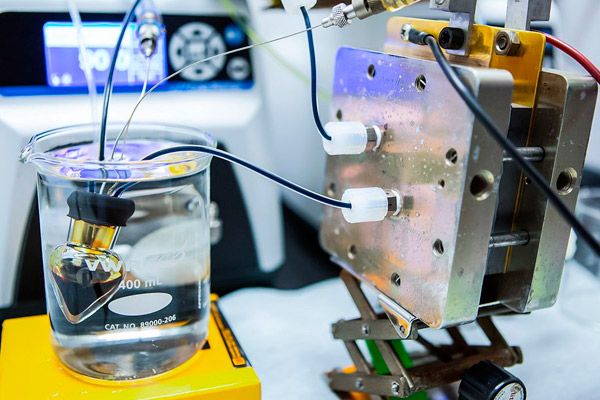New publications
The new batteries will run on vitamins
Last reviewed: 02.07.2025

All iLive content is medically reviewed or fact checked to ensure as much factual accuracy as possible.
We have strict sourcing guidelines and only link to reputable media sites, academic research institutions and, whenever possible, medically peer reviewed studies. Note that the numbers in parentheses ([1], [2], etc.) are clickable links to these studies.
If you feel that any of our content is inaccurate, out-of-date, or otherwise questionable, please select it and press Ctrl + Enter.
At the University of Toronto, a team of chemists has developed a completely new type of battery that can run on vitamins. Using genetically modified fungi, the scientists produced vitamin B2 threads, from which they developed a high-capacity battery.
The characteristics of the new battery can be compared with lithium-ion batteries that are currently used and have a voltage of 2.5 V, but instead of the usual lithium, which is used in these batteries as a cathode, the scientists used flavin from vitamin B2 threads.
According to scientists, they had a hard time finding molecules that would meet all the requirements and could be used in consumer electronics, but they eventually did. It was not by chance that scientists were interested in natural materials, and one of the researchers, Dwight Seferos, noted that if you take an initially complex material, it will take much less time to produce a new material.
At Harvard, scientists conducted a similar experiment and included vitamin B2 in the battery, but in Toronto, they said that the model they developed is the first of its kind and uses polymer molecules (long-chain) in one of the electrodes. As a result, such a battery effectively stores energy not in metals, but in plastic, which is less toxic and easier to process.
After a long study of various long-chain polymers, chemists managed to create a new material. According to Seferos, organic chemistry can be compared to Lego - the parts are put together in a certain order, but sometimes it happens that on paper everything should fit together, but in reality the parts do not fit together, the same process can be observed in chemistry with molecules. Long-chain polymers are molecules that are attached to the main chain of long molecules.
The researchers themselves noted that they were able to assemble their “constructor” only on the fifth try, when, after combining long-chain molecules and two flavin units, they obtained a new cathode material that met all the scientists’ requirements.

Vitamin B2 is necessary for the accumulation of energy in the body, and it is also capable of entering into reactions, which is precisely the property that interested scientists, as it makes vitamin B2 an excellent option for use in rechargeable batteries.
Seferos explained that vitamin B2 can accept up to two electrons at a time, has a high throughput compared to other polymers whose properties have been studied, and can carry multiple charges. Scientists are now trying to find new variations of the material that could be recharged multiple times.
The first prototype of the new battery is currently the size of a battery from a conventional hearing aid, but experts hope that their thin, flexible and more energy-efficient batteries will be able to compete with traditional metal-containing batteries. The scientists also noted that the flavin-based technique will help develop transparent versions of batteries in the future.
